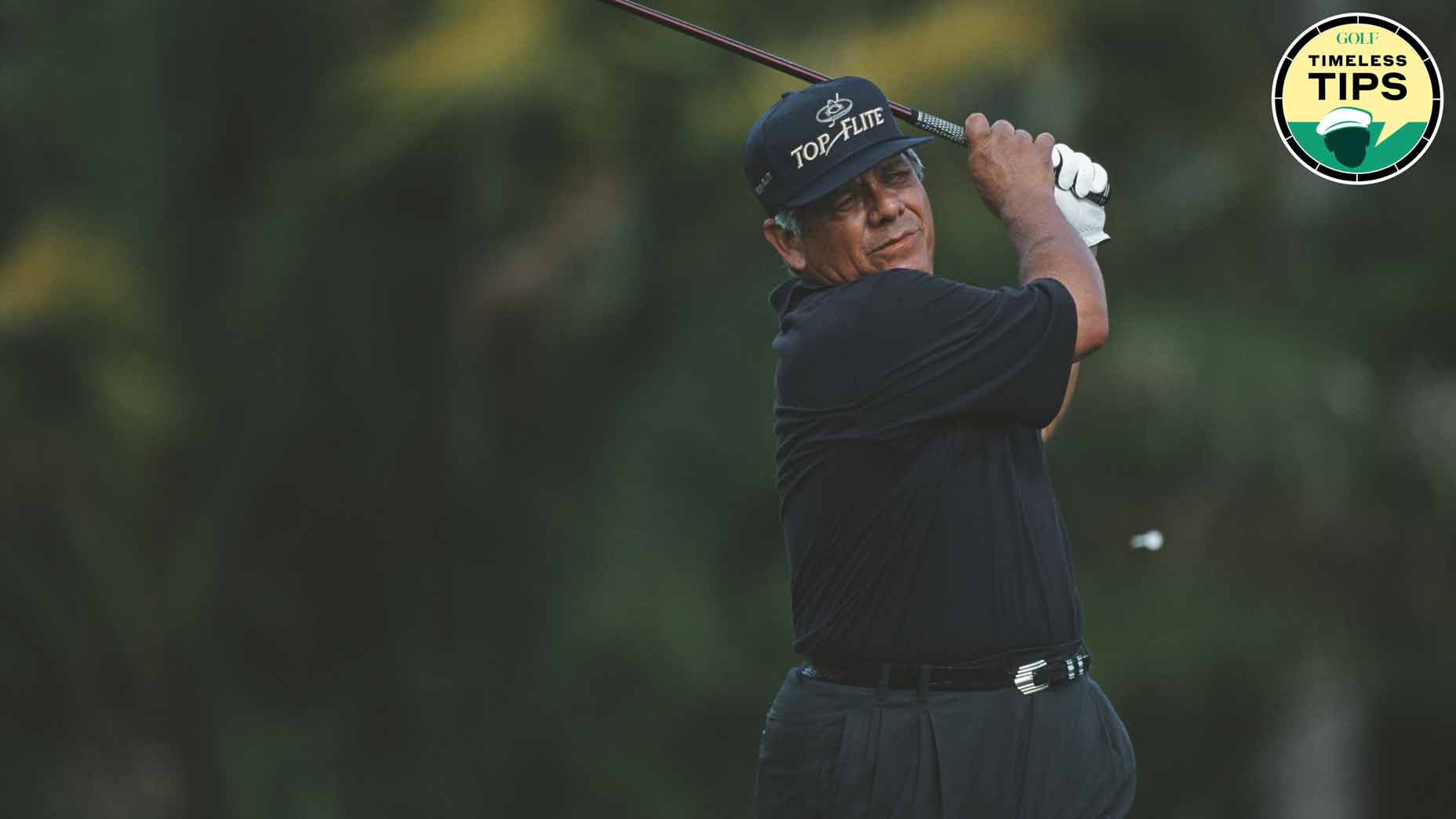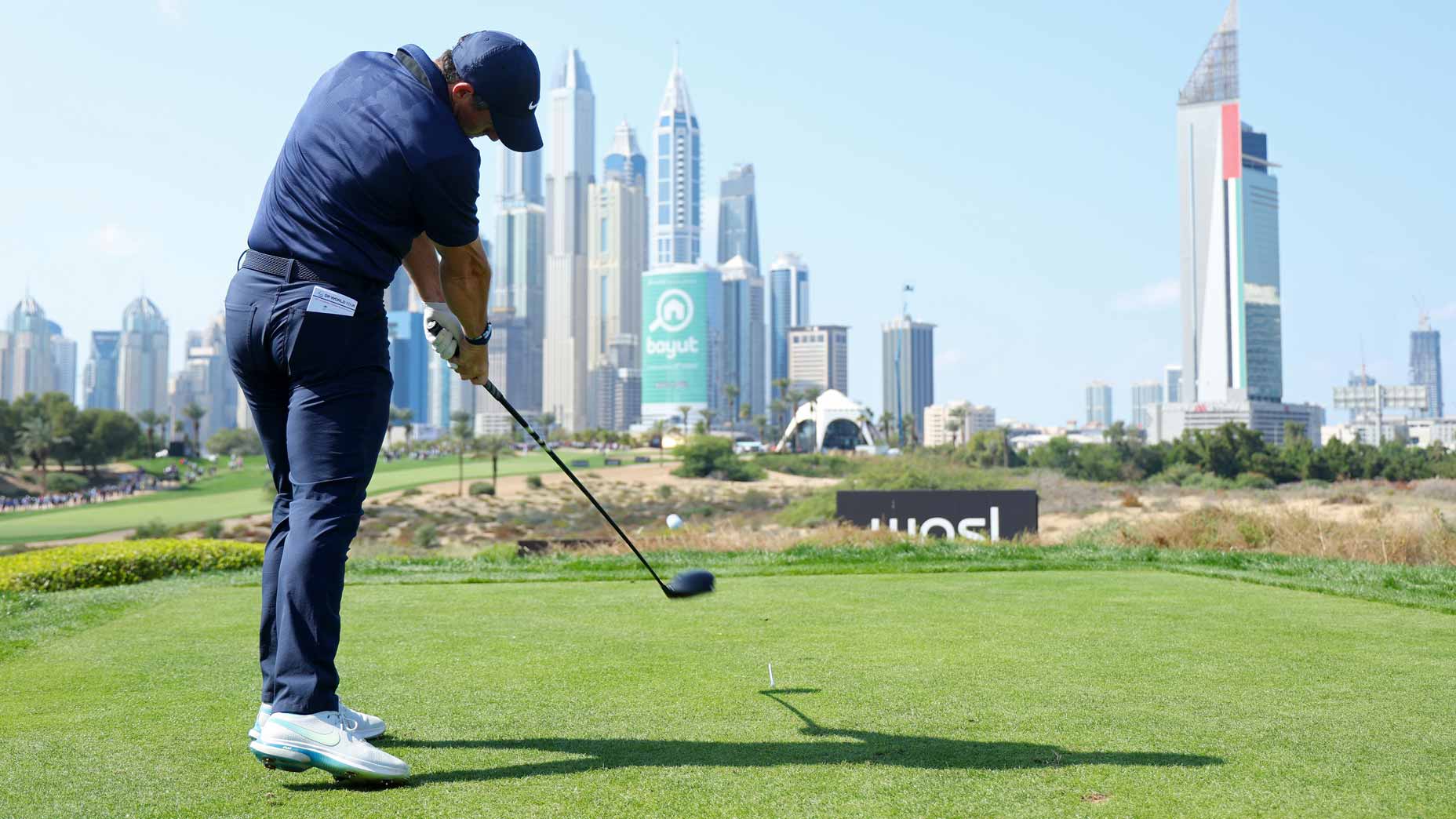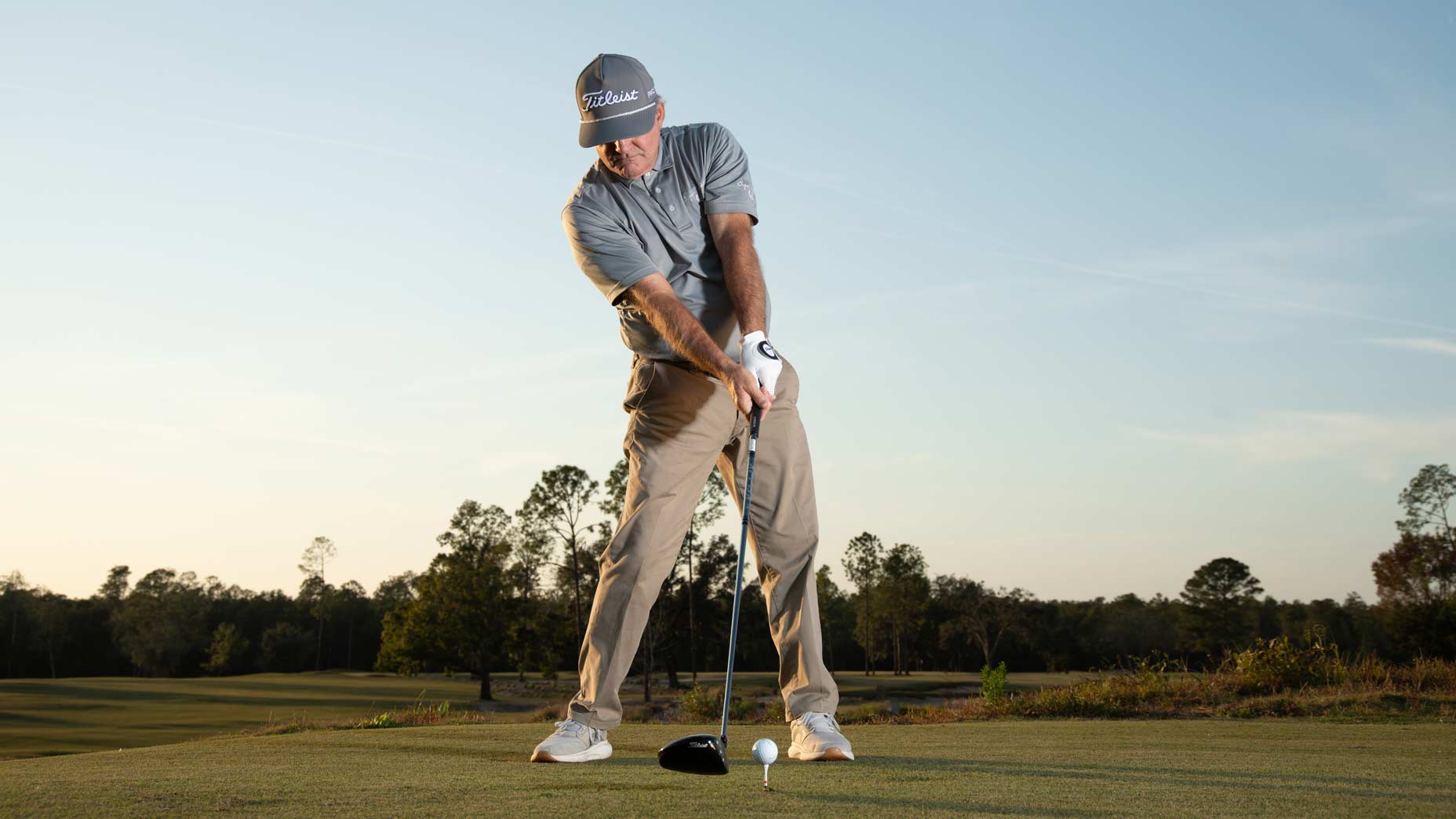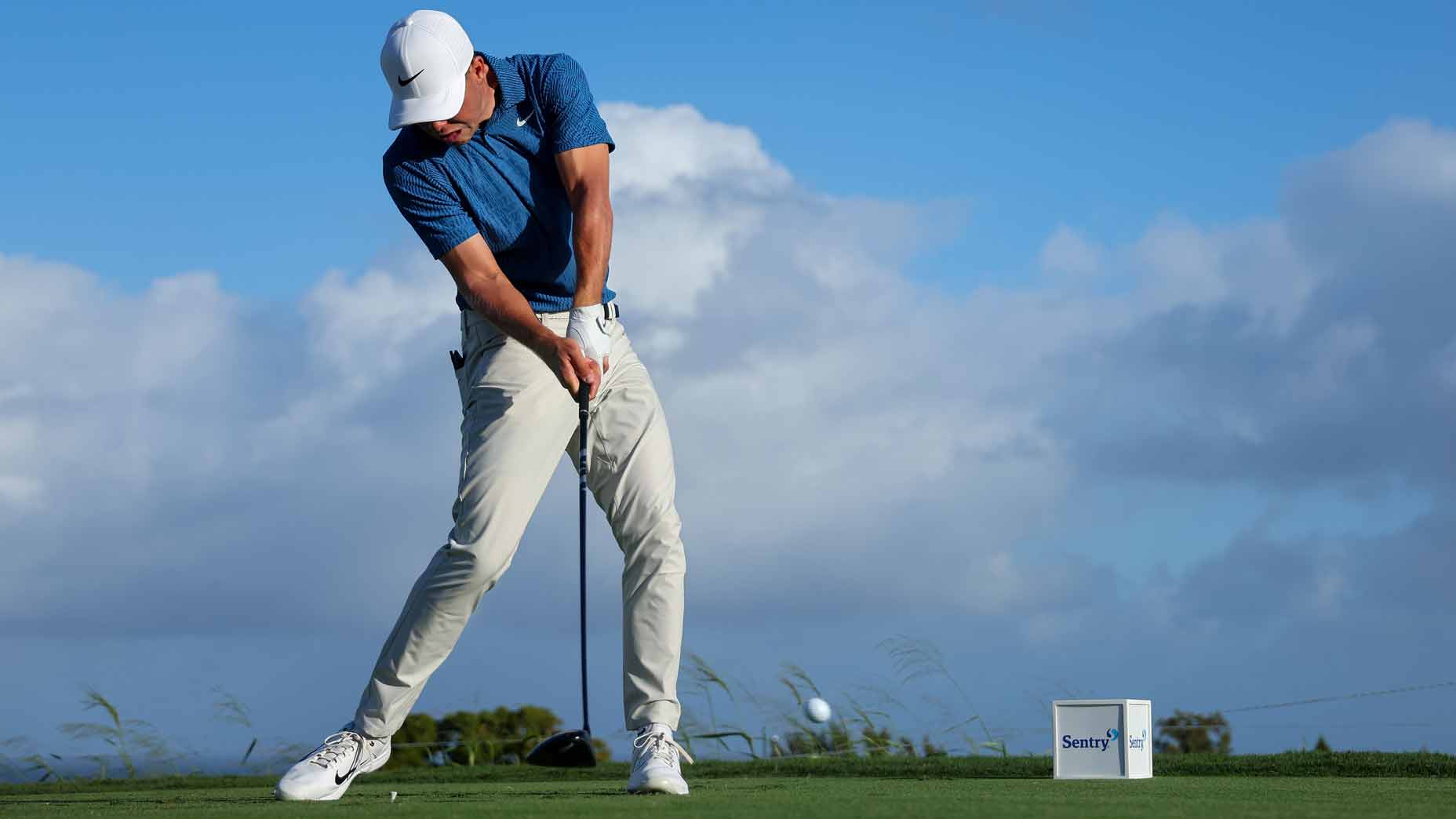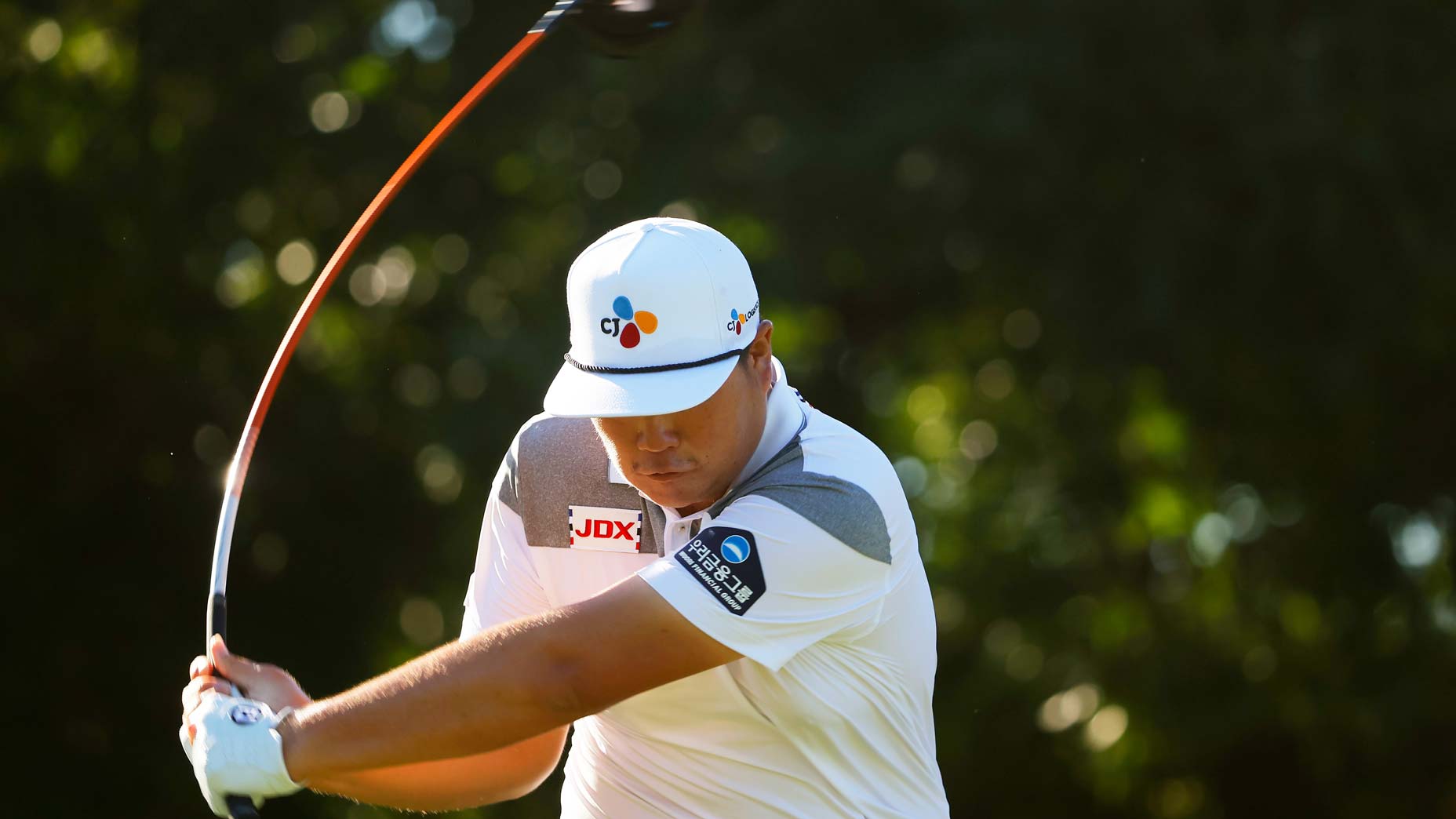Golf instruction is ever-evolving, but the best advice stands the test of time. In GOLF.com’s new series, Timeless Tips, we’re highlighting some of the greatest advice teachers and players have dispensed in the pages of GOLF Magazine. Today, we look back at our December 1979 issue for tips from Lee Trevino on how to hit a power fade. For unlimited access to the full GOLF Magazine digital archive, join InsideGOLF today; you’ll enjoy $140 of value for only $39.99/year.
Lee Trevino is not only one of the greatest golfers of all time, he’s quite the talker. If you’ve been around the game long enough, you’re sure to have heard one of his sage quips.
Among his most brilliant words of wisdom concerns the preferred way to shape your shots. “You can talk to a fade,” Trevino once said. “But a hook won’t listen.”
What he means by this is that controlling a fade is much easier than controlling a hook. That’s why so many high-level players prefer to shape the ball with fade spin rather than hook spin. And it’s why you should know how to hit a fade on command for your own game.
Trevino has a bit of advice on how to do that, too. Back in 1979, Trevino shared some wisdom on hitting a power fade with GOLF Magazine, which you can check out below.
Trevino’s tips for a power fade
There are probably as many different ways to draw and fade the ball as there are tacos in Mexico. I’m sure you’ve heard about many of them. Strong and weak grips. Opened and closed clubfaces. Inside and outside takeaways. Early and late releases. Light and tight grip pressures. But most of these methods are unreliable, particularly when you try to mix them up in your golf game.
My theory is that you should have one favorite shot, either a fade or a draw, and use it almost all the time. I favor the fade. But not an ordinary fade, with an open clubface or weak grip or outside-to-inside swing. Those types are too fickle. One mistake in timing, one miscalculation, and the fade you expected can become a blue dart into the left trees. No, I have my own technique, unlike anything you’ve heard of before. It has worked for me, and it can work for you. Even if you are a slicer, my technique will help you control your slice, and, as a bonus, help you hit a draw, as well.
Want to hit draws *and* fades? Start by changing this 1 thingBy: Zephyr Melton
I almost always “push” the ball. That’s the easy way to think of my fade, as a push/fade to the target. Very little can go wrong: Your wrists can’t roll over and surprise you with a snap hook. You don’t have to worry about releasing early or late, because, in effect, you don’t release at all. And you don’t need to fret about a “double -cross” — aiming left and hitting farther left by mistake. With my method the ball drifts to the right every time.
To begin, make sure your shoulders, hips and feet line up to the left of your intended target with the shoulders slightly less open than the hips and feet. Aim the clubface at the target, open to your body alignment. Play the ball about one to two inches inside your left heel and start the club back along the target line. This will put the club on an inside path in relation to your body.
On the downswing, shift your hips laterally toward the target and swing the club down on the target line, holding your release and keeping the clubhead on the target line well after impact. You should have the feeling of swinging very much inside-to-outside, and, in fact, you are.
“Inside-out?” you might ask. “Doesn’t that cause a draw?” Yes, it does, but only when your swing is inside-out in relation to your target line. This swing is inside-out in relation to the body alignment, but straight back to straight through in relation to the target line (see illustration). You won’t draw the ball with this swing. If anything, you will contact the ball after the club has swung down and back to the inside on the forward swing, thus putting a slight left-to-right spin on the ball.
So you have two big pluses here: First, you have an inside-to-outside attack in relation to your body. This is much more powerful than the outside- to-inside swings that many amateurs use to fade the ball. Second, you have the club moving down the target line, producing either a straight ball or slight fade. You can’t beat that combination.
Here’s a trick that might help you understand this a little better. After you set up, imagine that there are three golf balls in front of the one you’re about to hit (see illustration below). For the fade, you want to hit through all four balls. This will force your right shoulder down rather than around on the downswing, with your arms extending toward the target on the follow-through. Keep in mind that the right shoulder doesn’t dip. That would cause fat shots. Instead, the shoulder simply swivels underneath the chin. As a result, you will hold your release, keep the club moving down the target line, and push the ball to the hole, with very little sidespin.

I have, however, encountered one “problem” among people who have tried this method. They say to me, “Lee, when I swing your way, I hit the ball way to the right.” I just tell them, “Aim farther left.” Don’t open your stance more; just shift your entire orientation to the left. In other words, rather than aim the clubface down the fairway or at the pin, aim it at an intermediate target more to the left and shift your body alignment farther to the left as well. There’s no rule that says you have to aim down the middle. Line up for the trees on the left and push it down the fairway. It’s easy, when you know for sure that you can hit the push/fade.
The beauty of the balls-in-a-line image is that you can use it to draw the ball, too. For the right-to-left shot, line up your body parallel to the target line and aim your clubface at an intermediate target to the right, to allow for the draw. Then, simply think of picking off the first ball in line, the real ball, without touching the three imaginary ones. This brings the right shoulder and club up quickly in the follow-through, and whenever the club and shoulder move up, they go counterclockwise as well, which closes the clubface. Result: a draw.
Try my method. You’ll see how easy it is to fade and draw the ball. You’ll always know where the ball is going. And in golf, there’s no substitute for accuracy. I can vouch for that.
